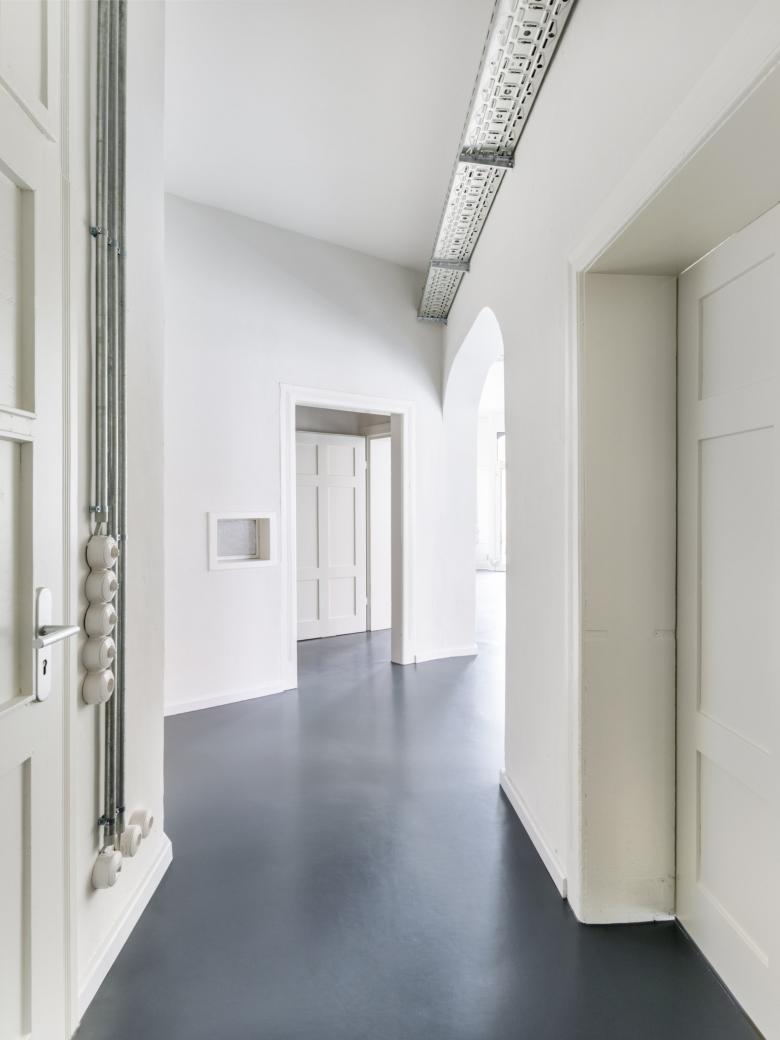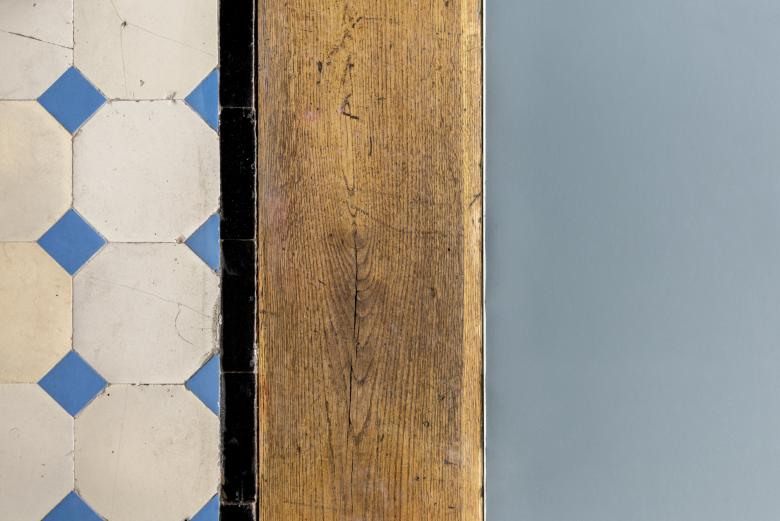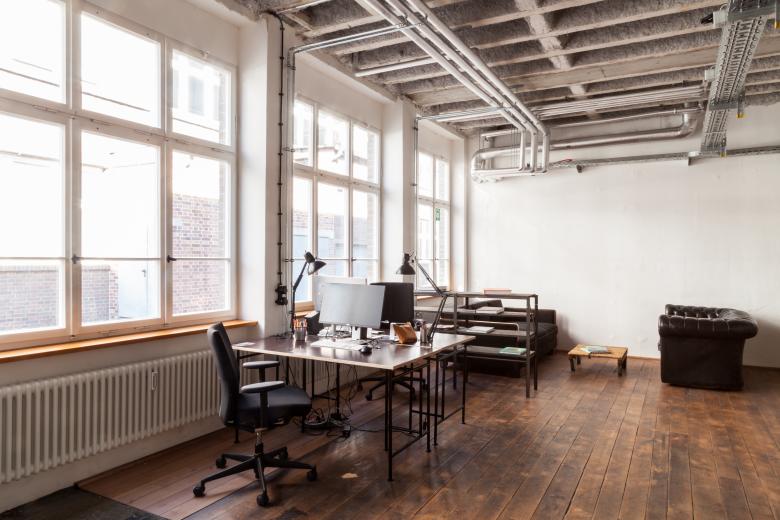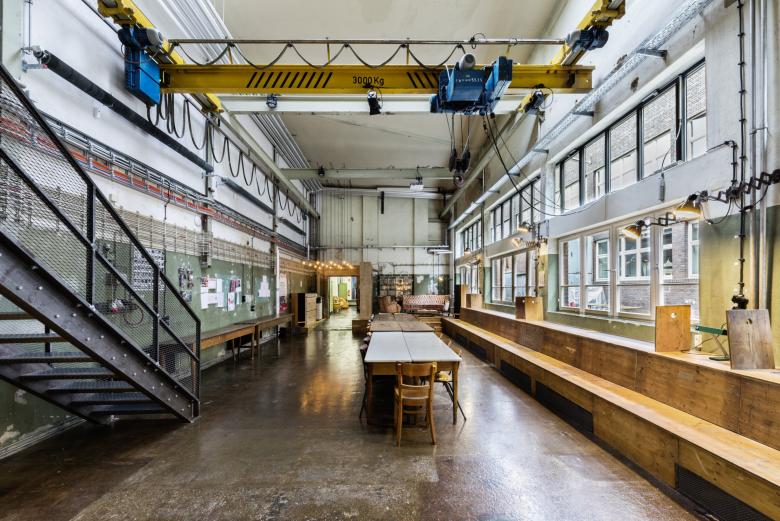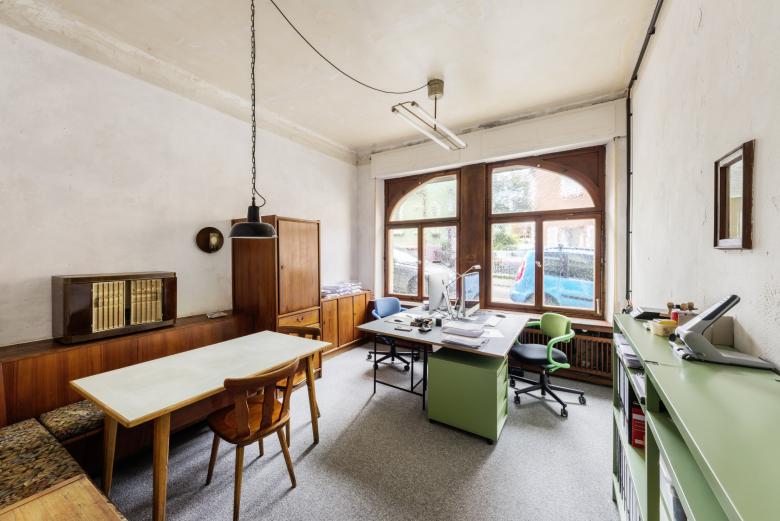Robi Wache: “Our approach is to work with existing structures, far away from the trend, which as a rigid design canon excludes options”
Robi Wache, from the Stuttgart-based office Robi Wache Architekten, believes that the office is no longer just a place of work but primarily a platform for social exchange and building interpersonal relationships. Therefore, he emphasizes the importance of a flexible design for both the building and the interior spaces so that users can actively appropriate them. This interview focuses on sufficiency-oriented building.
Thomas Geuder: Mr. Wache, when it comes to offices, we are currently experiencing a profound transformation, moving away from the traditional, brick-and-mortar office with individual desks and towards flexible work in various, expressive room atmospheres that can be chosen individually depending on personal requirements and moods. In your opinion, what role can and should the history of a place or a building play in this context?Robi Wache: We value the potential that is hidden in existing properties, harnessing embodied energy, thus keeping the previous built history alive and tangible. We are aiming to create a narrative that connects us with the built environment as well as with the esprit found there. The existing structure bears witness to the functions and former users of the building. This gives us a sense of where we come from, where we stand, and what we can build upon. With respect, we continue the history and create an identity-generating atmosphere. The clearer the commitment to the existing structure, the smaller the intervention, the more the qualities of the space can be emphasized.
Sufficiency represents an opportunity to break free from traditional conventions, privileges, and rigid structures. It allows us to concentrate on real values, placing people with their expectations, needs, and emotions at the center. It is about reflecting on our environment with a focus on a happy and meaningful life within the boundaries of our planet. The benefits for the client are evident: construction costs are lower, and by prioritizing, investments can be directed toward reducing operating costs. This requires a mature and critical engagement with people, society, and the environment.
Stuttgart, Refurbishment Libanonstrasse, Refurbishment of an office, 2018. Client: private (Photo: Sarah Weiselowski)
Since physical presence in office spaces is no longer an absolute necessity, they lose their role as the exclusive place of work. They transform into platforms for social exchange and interpersonal relationships, allowing teams to form and mutual trust to be built. Great flexibility of buildings, including considerations for future use, and the efficient use of existing resources in general are advantageous. It's important to base the design on a broad foundation and engage all stakeholders in a participatory and respectful manner, to learn through discussions and develop solutions on this basis.
We need different spaces for different activities, but not predetermined spaces with a predefined choreography. Users should actively appropriate these spaces. Rooms with a history make this process easier for us. It's not crucial to provide maximum comfort. Through sufficiency and breaks in the design, we want to encourage users to engage in communication and develop an appreciation for the resource provided.
Our approach is to work with the existing structures, far away from trends that impose rigid design canons that exclude options. Key aspects include the aestheticization of the construction, sustainable materials, demountability, and diffusion-open surfaces for a healthy indoor climate. We are happy to show what has been installed, including the building's technical installations, making future revisions easier.
We drew inspiration from the existing conditions as we found them. The rooms were largely left as they were, and new installations were surface-mounted, leaving a trace of our intervention. This high appreciation of what we found maintains this unique atmosphere. Our needs, such as collaborative and communal work and mutual consideration, have to be continuously negotiated within this spatial framework. This keeps us in constant dialogue about our work, fostering a sense of connection, not only among ourselves but also with the place where we work.
New Work, Sustainability, and Home Office in Focus
Under the motto "Celebrating Business Together", the Ambiente, Christmasworld, and Creativeworld trade fairs will take place simultaneously at on one of the most modern exhibition grounds in the world from January 26 to 30, 2024. The redesign of the Working section under the umbrella of Ambiente, the world's leading trade fair for the sector, will provide future-oriented impetus. This is because Ambiente Working will once again focus on office supplies and office equipment—not only for the classic office but also for mobile working, home offices, co-working spaces, and the Future of Work. ambiente.messefrankfurt.com/working
Future of Work Academy at Ambiente in Frankfurt
The Future of Work Academy is aimed at architects, facility managers, planners, and office supply and equipment retailers. After its successful debut in 2017, this year, a total of eight presentations will explore current changes in the world of work, digital collaboration solutions, and sustainable concepts for modern workplaces. At Ambiente 2024, the Future of Work Academy will offer presentations and a varied program on all days of the trade fair. The lectures, each offering different perspectives on the theme of work with a focus on architecture and office planning, will take place on January 27 and 28 from 11:30 a.m. to 5:00 p.m.
Lectures on January 27 and 28, 2024
Katrin Jacobs (HENN), Carla Wilkins (Lichtvision), Steve Jende (Elbstrand & Mannschaft), Martin Jasper (Martin Jasper Architects), Tim Hupe (HUPE FLATAU PARTNER), Claudia Meixner, (Meixner Schlüter Wendt), Sabrina Tafelmeier and Réka Visnyei (INpuls INTERIOR DESIGN ARCHITECTURE), Jessica Borchardt (BAID)—all 8 lectures will be given in German and simultaneously translated into English.
Ambiente Working – Future of Work Academy – Information + Registration
World-Architects is content partner of Messe Frankfurt.



